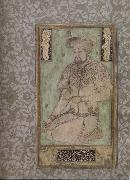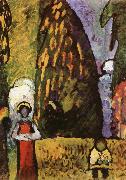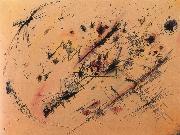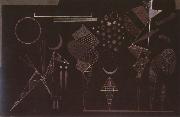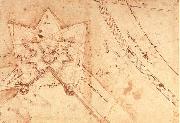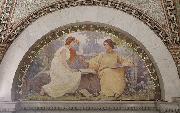Wholesale Oil Painting Reproductions No Minimum and Door to Door! |
|||||||||||
|
|
|||||||||||

|
|||||||||||
|
|
|
||||||||
All Bihzad Oil Paintings |
||||||||
|
|
||||||||
|
|
||||||||
|
Artist Introduction: the period of 1465-153
Persian illustrator. The most famous master of Persian painting, he is important both for the paintings he executed and for the wider influence of the style associated with his name. Evidently orphaned at a young age, Bihzad is said to have been raised and trained by MIRAK, a painter and calligrapher employed in Herat by Husayn Bayqara. |
||||||||
|
|
||||||||
|
Study Painting ID:: 34173 |
mk90
Attrbuted to Bihzad,for a portrati of Sultan Husayn Mirza.
|
|||||||
Height Width |
INS/CM Quality |
|||||||
|
X |
| |||||||
|
|
||||||||
All Joseph Mallord William Turner Oil Paintings |
||||||||
|
|
||||||||
|
|
||||||||
|
Artist Introduction: English Romantic Painter, 1775-1851
Joseph Mallord William Turner (23 April 1775 ?C 19 December 1851) was an English Romantic landscape painter, watercolourist and printmaker, whose style is said to have laid the foundation for Impressionism. Although Turner was considered a controversial figure in his day, he is now regarded as the artist who elevated landscape painting to an eminence rivalling history painting.
Turner's talent was recognised early in his life. Financial independence allowed Turner to innovate freely; his mature work is characterised by a chromatic palette and broadly applied atmospheric washes of paint. According to David Piper's The Illustrated History of Art, his later pictures were called "fantastic puzzles." However, Turner was still recognised as an artistic genius: the influential English art critic John Ruskin described Turner as the artist who could most "stirringly and truthfully measure the moods of Nature." (Piper 321)
Suitable vehicles for Turner's imagination were to be found in the subjects of shipwrecks, fires (such as the burning of Parliament in 1834, an event which Turner rushed to witness first-hand, and which he transcribed in a series of watercolour sketches), natural catastrophes, and natural phenomena such as sunlight, storm, rain, and fog. He was fascinated by the violent power of the sea, as seen in Dawn after the Wreck (1840) and The Slave Ship (1840).
Turner placed human beings in many of his paintings to indicate his affection for humanity on the one hand (note the frequent scenes of people drinking and merry-making or working in the foreground), but its vulnerability and vulgarity amid the 'sublime' nature of the world on the other hand. 'Sublime' here means awe-inspiring, savage grandeur, a natural world unmastered by man, evidence of the power of God - a theme that artists and poets were exploring in this period. The significance of light was to Turner the emanation of God's spirit and this was why he refined the subject matter of his later paintings by leaving out solid objects and detail, concentrating on the play of light on water, the radiance of skies and fires. Although these late paintings appear to be 'impressionistic' and therefore a forerunner of the French school, Turner was striving for expression of spirituality in the world, rather than responding primarily to optical phenomena.
Rain, Steam and Speed - The Great Western Railway painted (1844).His early works, such as Tintern Abbey (1795), stayed true to the traditions of English landscape. However, in Hannibal Crossing the Alps (1812), an emphasis on the destructive power of nature had already come into play. His distinctive style of painting, in which he used watercolour technique with oil paints, created lightness, fluency, and ephemeral atmospheric effects. (Piper 321)
One popular story about Turner, though it likely has little basis in reality, states that he even had himself "tied to the mast of a ship in order to experience the drama" of the elements during a storm at sea.
In his later years he used oils ever more transparently, and turned to an evocation of almost pure light by use of shimmering colour. A prime example of his mature style can be seen in Rain, Steam and Speed - The Great Western Railway, where the objects are barely recognizable. The intensity of hue and interest in evanescent light not only placed Turner's work in the vanguard of English painting, but later exerted an influence upon art in France, as well; the Impressionists, particularly Claude Monet, carefully studied his techniques. |
||||||||
|
|
||||||||
|
|
Study Painting ID:: 55023 |
mk239
1909
Oil on canvas
|
||||||
Height Width |
INS/CM Quality |
|||||||
|
X |
| |||||||
|
|
||||||||
All Joseph Mallord William Turner Oil Paintings |
||||||||
|
|
||||||||
|
|
||||||||
|
Artist Introduction: English Romantic Painter, 1775-1851
Joseph Mallord William Turner (23 April 1775 ?C 19 December 1851) was an English Romantic landscape painter, watercolourist and printmaker, whose style is said to have laid the foundation for Impressionism. Although Turner was considered a controversial figure in his day, he is now regarded as the artist who elevated landscape painting to an eminence rivalling history painting.
Turner's talent was recognised early in his life. Financial independence allowed Turner to innovate freely; his mature work is characterised by a chromatic palette and broadly applied atmospheric washes of paint. According to David Piper's The Illustrated History of Art, his later pictures were called "fantastic puzzles." However, Turner was still recognised as an artistic genius: the influential English art critic John Ruskin described Turner as the artist who could most "stirringly and truthfully measure the moods of Nature." (Piper 321)
Suitable vehicles for Turner's imagination were to be found in the subjects of shipwrecks, fires (such as the burning of Parliament in 1834, an event which Turner rushed to witness first-hand, and which he transcribed in a series of watercolour sketches), natural catastrophes, and natural phenomena such as sunlight, storm, rain, and fog. He was fascinated by the violent power of the sea, as seen in Dawn after the Wreck (1840) and The Slave Ship (1840).
Turner placed human beings in many of his paintings to indicate his affection for humanity on the one hand (note the frequent scenes of people drinking and merry-making or working in the foreground), but its vulnerability and vulgarity amid the 'sublime' nature of the world on the other hand. 'Sublime' here means awe-inspiring, savage grandeur, a natural world unmastered by man, evidence of the power of God - a theme that artists and poets were exploring in this period. The significance of light was to Turner the emanation of God's spirit and this was why he refined the subject matter of his later paintings by leaving out solid objects and detail, concentrating on the play of light on water, the radiance of skies and fires. Although these late paintings appear to be 'impressionistic' and therefore a forerunner of the French school, Turner was striving for expression of spirituality in the world, rather than responding primarily to optical phenomena.
Rain, Steam and Speed - The Great Western Railway painted (1844).His early works, such as Tintern Abbey (1795), stayed true to the traditions of English landscape. However, in Hannibal Crossing the Alps (1812), an emphasis on the destructive power of nature had already come into play. His distinctive style of painting, in which he used watercolour technique with oil paints, created lightness, fluency, and ephemeral atmospheric effects. (Piper 321)
One popular story about Turner, though it likely has little basis in reality, states that he even had himself "tied to the mast of a ship in order to experience the drama" of the elements during a storm at sea.
In his later years he used oils ever more transparently, and turned to an evocation of almost pure light by use of shimmering colour. A prime example of his mature style can be seen in Rain, Steam and Speed - The Great Western Railway, where the objects are barely recognizable. The intensity of hue and interest in evanescent light not only placed Turner's work in the vanguard of English painting, but later exerted an influence upon art in France, as well; the Impressionists, particularly Claude Monet, carefully studied his techniques. |
||||||||
|
|
||||||||
|
|
Study Painting ID:: 55090 |
mk239
1913
Watercolour
25.8x34.5cm
|
||||||
Height Width |
INS/CM Quality |
|||||||
|
X |
| |||||||
|
|
||||||||
All Joseph Mallord William Turner Oil Paintings |
||||||||
|
|
||||||||
|
|
||||||||
|
Artist Introduction: English Romantic Painter, 1775-1851
Joseph Mallord William Turner (23 April 1775 ?C 19 December 1851) was an English Romantic landscape painter, watercolourist and printmaker, whose style is said to have laid the foundation for Impressionism. Although Turner was considered a controversial figure in his day, he is now regarded as the artist who elevated landscape painting to an eminence rivalling history painting.
Turner's talent was recognised early in his life. Financial independence allowed Turner to innovate freely; his mature work is characterised by a chromatic palette and broadly applied atmospheric washes of paint. According to David Piper's The Illustrated History of Art, his later pictures were called "fantastic puzzles." However, Turner was still recognised as an artistic genius: the influential English art critic John Ruskin described Turner as the artist who could most "stirringly and truthfully measure the moods of Nature." (Piper 321)
Suitable vehicles for Turner's imagination were to be found in the subjects of shipwrecks, fires (such as the burning of Parliament in 1834, an event which Turner rushed to witness first-hand, and which he transcribed in a series of watercolour sketches), natural catastrophes, and natural phenomena such as sunlight, storm, rain, and fog. He was fascinated by the violent power of the sea, as seen in Dawn after the Wreck (1840) and The Slave Ship (1840).
Turner placed human beings in many of his paintings to indicate his affection for humanity on the one hand (note the frequent scenes of people drinking and merry-making or working in the foreground), but its vulnerability and vulgarity amid the 'sublime' nature of the world on the other hand. 'Sublime' here means awe-inspiring, savage grandeur, a natural world unmastered by man, evidence of the power of God - a theme that artists and poets were exploring in this period. The significance of light was to Turner the emanation of God's spirit and this was why he refined the subject matter of his later paintings by leaving out solid objects and detail, concentrating on the play of light on water, the radiance of skies and fires. Although these late paintings appear to be 'impressionistic' and therefore a forerunner of the French school, Turner was striving for expression of spirituality in the world, rather than responding primarily to optical phenomena.
Rain, Steam and Speed - The Great Western Railway painted (1844).His early works, such as Tintern Abbey (1795), stayed true to the traditions of English landscape. However, in Hannibal Crossing the Alps (1812), an emphasis on the destructive power of nature had already come into play. His distinctive style of painting, in which he used watercolour technique with oil paints, created lightness, fluency, and ephemeral atmospheric effects. (Piper 321)
One popular story about Turner, though it likely has little basis in reality, states that he even had himself "tied to the mast of a ship in order to experience the drama" of the elements during a storm at sea.
In his later years he used oils ever more transparently, and turned to an evocation of almost pure light by use of shimmering colour. A prime example of his mature style can be seen in Rain, Steam and Speed - The Great Western Railway, where the objects are barely recognizable. The intensity of hue and interest in evanescent light not only placed Turner's work in the vanguard of English painting, but later exerted an influence upon art in France, as well; the Impressionists, particularly Claude Monet, carefully studied his techniques. |
||||||||
|
|
||||||||
|
|
Study Painting ID:: 55212 |
mk239
1914
31.8x49.5cm
|
||||||
Height Width |
INS/CM Quality |
|||||||
|
X |
| |||||||
|
|
||||||||
All Domenico Ghirlandaio Oil Paintings |
||||||||
|
|
||||||||
|
|
||||||||
|
Artist Introduction: Italian
1449-1494
Domenico Ghirlandaio Galleries
Painter, mosaicist and possibly goldsmith. He was head of one of the most active workshops in late 15th-century Florence. He developed a style of religious narrative that blended the contemporary with the historical in a way that updated the basic tenets of early Renaissance art. Domenico documented material situation |
||||||||
|
|
||||||||
|
|
Study Painting ID:: 62402 |
220 x 170 mm Galleria degli Uffizi, Florence The picture shows a study to the fresco of the Birth of Mary executed in the Cappella Tornabuoni of the Santa Maria Novella in Florence. The only figure in the fresco who conveys any sense of movement is the servant pouring water into a brass basin for the child to bathe in. Ghirlandaio prepared for the painting by drawing this detailed individual study. The cloth fluttering behind her is lower in the fresco than here, in order not to obstruct our view of Anne. The sleeves were also altered at her elbows. The cross-hatching and the strong contours so typical of Ghirlandaio's style of drawing are clearly recognizable |
||||||
Height Width |
INS/CM Quality |
|||||||
|
X |
| |||||||
|
|
||||||||
All Michelangelo Buonarroti Oil Paintings |
||||||||
|
|
||||||||
|
|
||||||||
|
Artist Introduction: b Caprese 1475 d Rome 1564
Born: March 6, 1475
Caprese, Italy
Died: February 18, 1564
Rome, Italy
Italian artist
Michelangelo was one of the greatest sculptors of the Italian Renaissance and one of its greatest painters and architects.
Early life
Michelangelo Buonarroti was born on March 6, 1475, in Caprese, Italy, a village where his father, Lodovico Buonarroti, was briefly serving as a Florentine government agent. The family moved back to Florence before Michelangelo was one month old. Michelangelo's mother died when he was six. From his childhood Michelangelo was drawn to the arts, but his father considered this pursuit below the family's social status and tried to discourage him. However, Michelangelo prevailed and was apprenticed (worked to learn a trade) at the age of thirteen to Domenico Ghirlandaio (1449?C1494), the most fashionable painter in Florence at the time.
After a year Michelangelo's apprenticeship was broken off. The boy was given access to the collection of ancient Roman sculpture of the ruler of Florence, Lorenzo de' Medici (1449?C1492). He dined with the family and was looked after by the retired sculptor who was in charge of the collection. This arrangement was quite unusual at the time.
Early works
Michelangelo's earliest sculpture, the Battle of the Centaurs (mythological creatures that are part man and part horse), a stone work created when he was about seventeen, is regarded as remarkable for the simple, solid forms and squarish proportions of the figures, which add intensity to their violent interaction.
Soon after Lorenzo died in 1492, the Medici family fell from power and Michelangelo fled to Bologna. In 1494 he carved three saints for the church of San Domenico. They show dense forms, in contrast to the linear forms which were then dominant in sculpture.
Rome
After returning to Florence briefly, Michelangelo moved to Rome. There he carved a Bacchus for a banker's garden of ancient sculpture. This is Michelangelo's earliest surviving large-scale work, and his only sculpture meant to be viewed from all sides.
In 1498 the same banker commissioned Michelangelo to carve the Piet?? now in St. Peter's. The term piet?? refers to a type of image in which Mary supports the dead Christ across her knees. Larger than life size, the Piet?? contains elements which contrast and reinforce each other: vertical and horizontal, cloth and skin, alive and dead, female and male.
Florence
On Michelangelo's return to Florence in 1501 he was recognized as the most talented sculptor of central Italy. He was commissioned to carve the David for the Florence Cathedral.
Michelangelo's Battle of Cascina was commissioned in 1504; several sketches still exist. The central scene shows a group of muscular soldiers climbing from a river where they had been swimming to answer a military alarm. This fusion of life with colossal grandeur henceforth was the special quality of Michelangelo's art.
From this time on, Michelangelo's work consisted mainly of very large projects that he never finished. He was unable to turn down the vast commissions of his great clients which appealed to his preference for the grand scale.
Pope Julius II (1443?C1513) called Michelangelo to Rome in 1505 to design his tomb, which was to include about forty life-size statues. Michelangelo worked on the project off and on for the next forty years.
Sistine Chapel
In 1508 Pope Julius II commissioned Michelangelo to decorate the ceiling of the chief Vatican chapel, the Sistine. The traditional format of ceiling painting contained only single figures. Michelangelo introduced dramatic scenes and an original framing system, which was his earliest architectural design. The chief elements are twelve male and female prophets (the latter known as sibyls) and nine stories from Genesis.
Michelangelo stopped for some months halfway along. When he returned to the ceiling, his style underwent a shift toward a more forceful grandeur and a richer emotional tension than in any previous work. The images of the Separation of Light and Darkness, and Ezekiel illustrate this greater freedom and mobility.
After the ceiling was completed in 1512, Michelangelo returned to the tomb of Julius and carved a Moses and two Slaves. His models were the same physical types he used for the prophets and their attendants in the Sistine ceiling. Julius's death in 1513 halted the work on his tomb.
Pope Leo X, son of Lorenzo de' Medici, proposed a marble facade for the family parish church of San Lorenzo in Florence to be decorated with statues by Michelangelo. After four years of quarrying and designing the project was canceled.
Medici Chapel
In 1520 Michelangelo was commissioned to execute the Medici Chapel for two young Medici dukes. It contains two tombs, each with an image of the deceased and two allegorical (symbolic) figures: Day and Night on one tomb, and Morning and Evening on the other.
A library, the Biblioteca Laurenziana, was built at the same time on the opposite side of San Lorenzo to house Pope Leo X's books. The entrance hall and staircase are some of Michelangelo's most astonishing architecture, with recessed columns resting on scroll brackets set halfway up the wall and corners stretched open rather than sealed.
Poetry
Michelangelo wrote many poems in the 1530s and 1540s. Approximately three hundred survive. The earlier poems are on the theme of Neoplatonic love (belief that the soul comes from a single undivided source to which it can unite again) and are full of logical contradictions and intricate images. The later poems are Christian. Their mood is penitent (being sorrow and regretful); and they are written in a simple, direct style.
Last Judgment
In 1534 Michelangelo left Florence for the last time, settling in Rome. The next ten years were mainly given over to painting for Pope Paul III (1468?C1549). |
||||||||
|
|
||||||||
|
|
Study Painting ID:: 62906 |
1525 Ink Casa Buonarroti, Florence The picture shows a study for the fortifications of Porta del Prato in Florence. Artist: MICHELANGELO Buonarroti Title: Study Date: 1501-1550 Italian , graphics : study |
||||||
Height Width |
INS/CM Quality |
|||||||
|
X |
| |||||||
|
|
||||||||
All Charles Sprague Pearce Oil Paintings |
||||||||
|
|
||||||||
|
|
||||||||
|
Artist Introduction: For other people named Charles Pearce, see Charles Pearce (disambiguation).
Charles Sprague Pearce (October 13, 1851 - May 18, 1914) was an American artist.
|
||||||||
|
|
||||||||
|
|
Study Painting ID:: 95407 |
Study mural in lunette from the Family and Education series by Charles Sprague Pearce. North Corridor, Great Hall, Library of Congress Thomas Jefferson Building, Washington, D.C. Mural contains artist's logo and "COPYRIGHT 1896 BY C.S.PEARCE".
TTD |
||||||
Height Width |
INS/CM Quality |
|||||||
|
X |
| |||||||
|
|
||||||||
|
Prev Next
|
||||||||
|
|
||||||||
|
Related Paintings to Charles Sprague Pearce :. |
||||||||
|
|
||||||||
|
CONTACT US |
